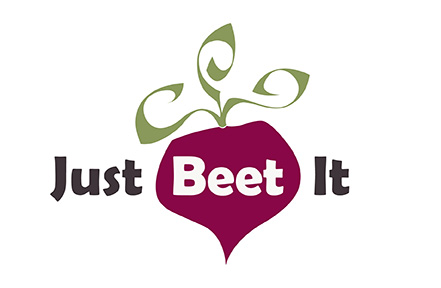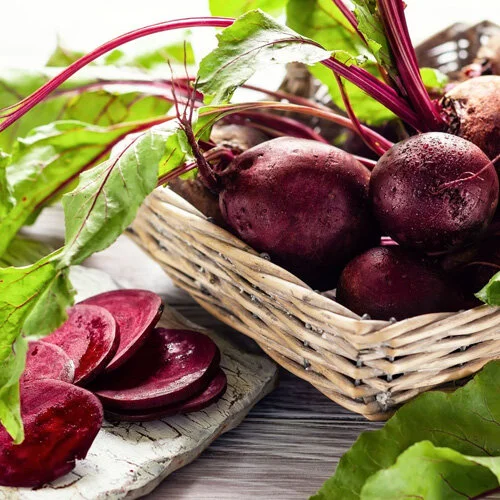GROWING BEETS
The beet is an easy-to-grow plant with short growing time (only 50-70 days), and in many areas of the world (especially if you have a greenhouse), beets can be grown year-round.
The beet is a suitable vegetable plant for beginning gardeners. Also, beets are rich in nutrients and vitamins and can be used in salads, soups, juices, and other delicious dishes. There are so many wonderful reasons to grow beets!
Beets do not need too much soil to grow and can also be planted in pots. You can have a quality beet garden with some steps below.
HOW TO GROW BEETS IN YOUR GARDEN
Step 1: Preparing for Your Garden
1. Seeds
Nowadays, beet seeds are sold at plant breeders, nurseries. and online, so you can buy them quickly and easily. The breed brands are also diverse, so make sure you choose a reputable and quality one. Choose non-GMO and organic when possible.
2. Time for Growing
Beets are planted year-round; however, an excellent time for growth is from August to March (depending on geographic location and/or if a greenhouse is used).
3. Space for Growing
Beets can be grown in open space with bright sunlight; so you can plant your beet garden on the balcony, on the roof, or in the garden. This veggie variety can live in an area with part shade.
4. Soil for Growing
Beets like moist, neutral and fertile soil with pH from 6.5 to 7.0. The land needs to be productive, spongy and well-drained without stones, grass, and pathogens. Your soil must have high levels of phosphorus which is particularly nutritious because the beets need high nutrition to grow. If you cannot produce the soil yourself, you can buy bio-soil at the store.
5. Pots to Grow Beets
If you want to plant beets in pots, prepare pots with the height of 17-20 cm and drain hole. However, if you're going to grow beets to decorate your home patio or deck, you can also look for smaller and more attractive pots.
Step 2: Planting and Caring for Your Beet Garden
1. Plant the Seeds
For quick germination, you should soak seeds into warm water for 3-5 hours before planting.
To plant in pots: spread a layer of cotton. Water the cotton, and then sprinkle the seeds on the cotton layer. Then, cover seeds with another layer of cotton wool. Water this layer, and then keep in the shade.
Wait until the small cracks appear; plant seeds into pots. Each seed should be 1-2 inches apart. Same distance for garden planting.
2. Care for the Seeds
Water the seeds daily until they germinate. However, avoid watering too much as that may cause seeds to rot.
When your plants are about 2 cm high, remove weak and diseased plants to prevent the infection. If you have additional plants, put them in the open space.
When your plants are about 10 cm high, it may be necessary to manure them. For every square meter of plants, use 0.4-0.6 liters of organic fertilizer. Then, add a layer of well-rotted manure or compost. If you notice that the leaves are a bit yellow, add about 30g of high-nitrogen fertilizer per square meter plants. Observing your plants is also very important. If too much nitrogen is applied to the plant, it can cause small roots and larger leaves. If you find that your plants produce small roots and broad leaves, choose a low nitrogen-level fertilizer.
If the weather is too hot and makes the soil dry, water your plants once a day. If the weather is cold, water the plants every 2-3 days. If it rains, you don't need to water the plants.
After some days, grasses and/or weeds will grow, remove them by hand. You should care for them when they are young because grasses and weeds will affect the plants' roots. Also, do not use sharp objects or hoes to care for the grasses as you can accidentally cut the roots.
Dealing with Pests and Diseases
Here are some diseases, pests, and their treatments that you need to know to ensure a healthy beet garden:
Leaf Miner or Mangold Leaf: A small and white grub burrowing inside the plant leaves. It will create a tunnel and then turn into blisters. The treatment for this disease is to cut the affected leaves and throw them out.
Spots: Brown spots appear on the leaves and drop out at the paler central. Treat leaf spots by removing the affected leaves.
Aphids: They cause curly plant leaves, distorting shoots, and less root yield. You can encourage ladybirds and hoverflies to treat aphids.
Flea beetles: They can create shot holes and round holes in the leaves and cause wilting or blight for the leaves. To manage flea beetles, use a mixture of 5 cups of water and one teaspoon of liquid soap to spray on the leaves of the plant. Or you can use white sticky traps to capture them.
Mexican bean beetles: They will eat the tissue from the underside of your leaves causing low crop yield and plant demise. To treat Mexican bean beetles, check your plant leaves to remove the eggs and larvae to stop their growth.
Leafhoppers: Leafhoppers will suck the sap from the leaves and result in white spots on the leaves. If the leafhopper density is high, this can cause leaf scorch. They often hide on the underside of leaves. To treat leafhoppers, you can find them on the leaves and remove them, or you can find some particular organic remedies for treatment.
Step 3: Harvesting and Storing Beets
When the roots are about the size of a small orange, you can harvest them. You should not let the roots be too big because they often become more fibrous and less sweet. Usually, you can harvest beets after 50-70 days of planting.
Gently hold the top of the plant leaves together. Combine with using tools such as a spade or fork-like tool to remove the roots.
Don’t throw away the beet greens as you can cook some tasty dishes with them, such as Minty Shamrock Smoothie with Beet Greens and Banana and Superhero Sauteed Beet Greens.
Don’t harvest all your plants. You should collect the big roots and let the smaller ones stay and the harvest them at the next use.
You can store fresh beets in the refrigerator for 5-7 days. If you want to store them longer, you can freeze or pickle beetroots.
With a little effort and care, you can have your beet garden. Growing beets does not require too much time or money. Therefore, do not hesitate to create your own garden. Beets are quite beneficial for your health! Check out these recipes for ideas and nutrition details: Beet, Orange and Banana Smoothie; Beet and Black Bean Burgers; Easy Roasted Beets with Crumbled Gorgonzola; Beet Cauliflower and Ginger Raw-Slaw.
About the Author
Emily Pham is a blogger with many years of experience in searching the best natural home remedies for beauty and health issues. All content provided is for informational and educational purposes. We recommend you consult a healthcare professional to determine which method is appropriate for you.
Resources
https://www.wikihow.com/Grow-Beetroot
https://www.almanac.com/plant/beets
https://www.quickcrop.co.uk/learning/plant/beetroot
YOU MAY ALSO LIKE












